SN1 reaction is a first order nucleophilic substitution e.g.
CH3−CH3∣C∣CH3−Br+H2O→CH3−CH3∣C∣CH3−OH+HBr
The concentration of nucleophile does not appear in the rate law expression.
Reaction rate k[RX]
In a mulptistep organic reaction , the rate-limiting step is the slowest step . Rate determining step is represented by the following energy level diagram:
![S(N^(1)) reaction is a first order nucleophilic substitution e.g. CH(3)-overset(CH(3))overset(|)underset(CH(3))underset(|)C-Br+H(2)Oto CH(3)-overset(CH(3))overset(|)underset(CH(3))underset(|)C-OH+HBr The concentration of nucleophile does not appear in the rate law expression. Reaction rate k[RX] In a mulptistep organic reaction , the rate-limiting step is the slowest step . Rate determining step is represented by the following energy level diagram: A reaction energy level diagram for an S(N^(1)) reaction .The rate limiting step is spontaneous dissociation of an alkyl halide to give a carbocation intermediate: In the graph 3 for S(N^(1)) reaction the rate limiting step is the spontaneous dissociation of alkyl halide and is given by](https://d10lpgp6xz60nq.cloudfront.net/physics_images/GRB_ORG_CHM_P2_C09_E01_385_Q01.png)
A reaction energy level diagram for an SN1 reaction .The rate limiting step is spontaneous dissociation of an alkyl halide to give a carbocation intermediate:
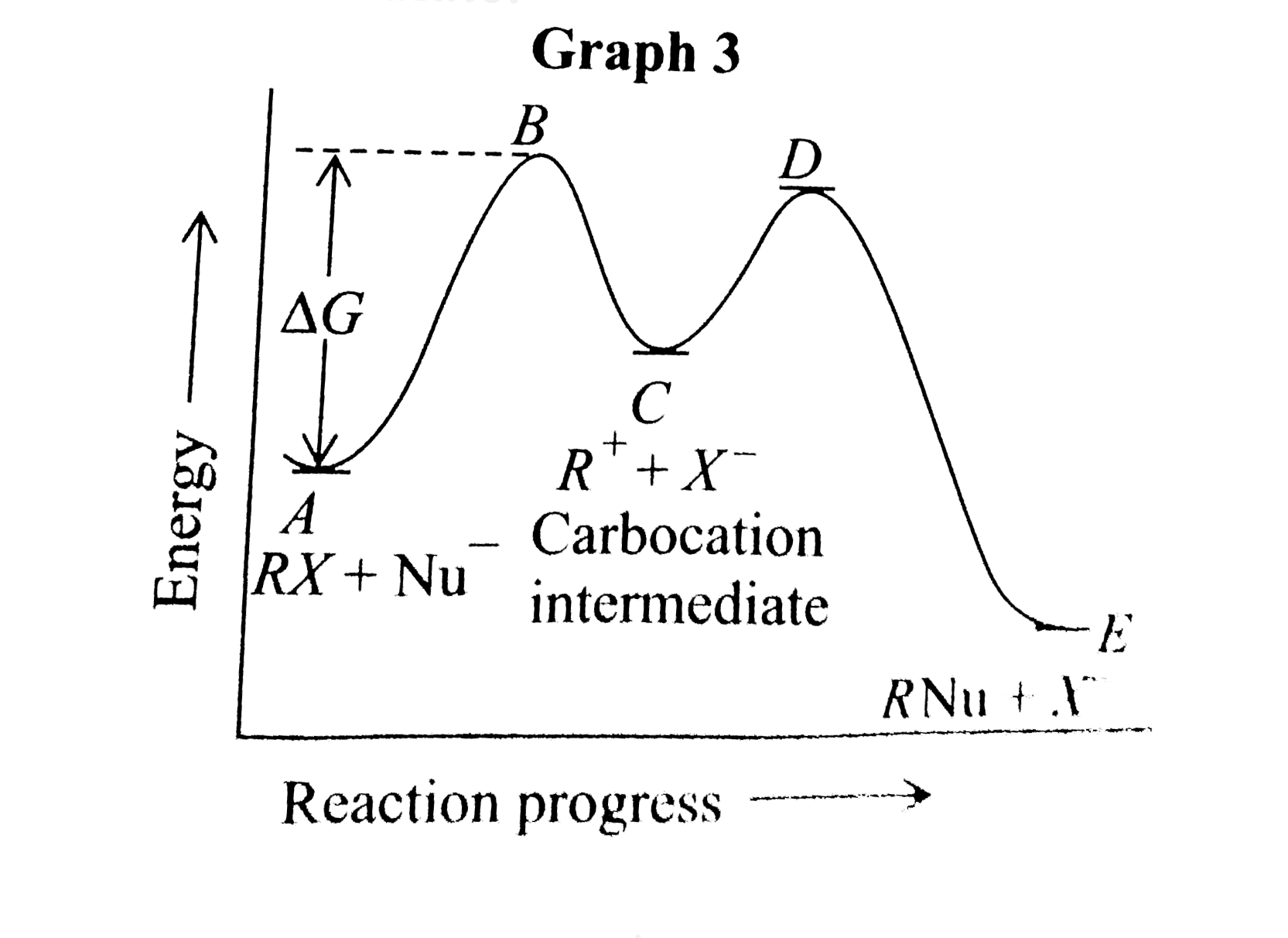
In the graph 3 for SN1 reaction the rate limiting step is the spontaneous dissociation of alkyl halide and is given by
AB
AC
AD
DE
The correct Answer is:A
Step by step video, text & image solution for S_(N^(1)) reaction is a first order nucleophilic substitution e.g. CH_(3)-overset(CH_(3))overset(|)underset(CH_(3))underset(|)C-Br+H_(2)Oto CH_(3)-overset(CH_(3))overset(|)underset(CH_(3))underset(|)C-OH+HBr The concentration of nucleophile does not appear in the rate law expression. Reaction rate k[RX] In a mulptistep organic reaction , the rate-limiting step is the slowest step . Rate determining step is represented by the following energy level diagram: A reaction energy level diagram for an S_(N^(1)) reaction .The rate limiting step is spontaneous dissociation of an alkyl halide to give a carbocation intermediate: In the graph 3 for S_(N^(1)) reaction the rate limiting step is the spontaneous dissociation of alkyl halide and is given by by Chemistry experts to help you in doubts & scoring excellent marks in Class 12 exams.
Topper's Solved these Questions
- BOOK - OP TANDONCHAPTER - HALOALKANES AND HALOARENES EXERCISE - Single Interger answer type questions14videos
HALOALKANES AND HALOARENES
- BOOK - OP TANDONCHAPTER - HALOALKANES AND HALOARENES EXERCISE - Matrix -Match Type Questions8videos
HALOALKANES AND HALOARENES
- BOOK - OP TANDONCHAPTER - ELECTROCHEMISTRYEXERCISE - Matrix-Matching Type Question3videos
ELECTROCHEMISTRY
- BOOK - OP TANDONCHAPTER - ISOMERISM (STRUCTURAL AND STEROISOMERISM)EXERCISE - INTEGER7videos
ISOMERISM (STRUCTURAL AND STEROISOMERISM)
Similar Questions
CH3C∣BrH−CH3∣C∣OH−C−O−CH3
View SolutionSN1 reaction is a first order nucleophilic substitution e.g.
CH3−CH3∣C∣CH3−Br+H2O→CH3−CH3∣C∣CH3−OH+HBr
The concentration of nucleophile does not appear in the rate law expression.
Reaction rate k[RX]
In a mulptistep organic reaction , the rate-limiting step is the slowest step . Rate determining step is represented by the following energy level diagram: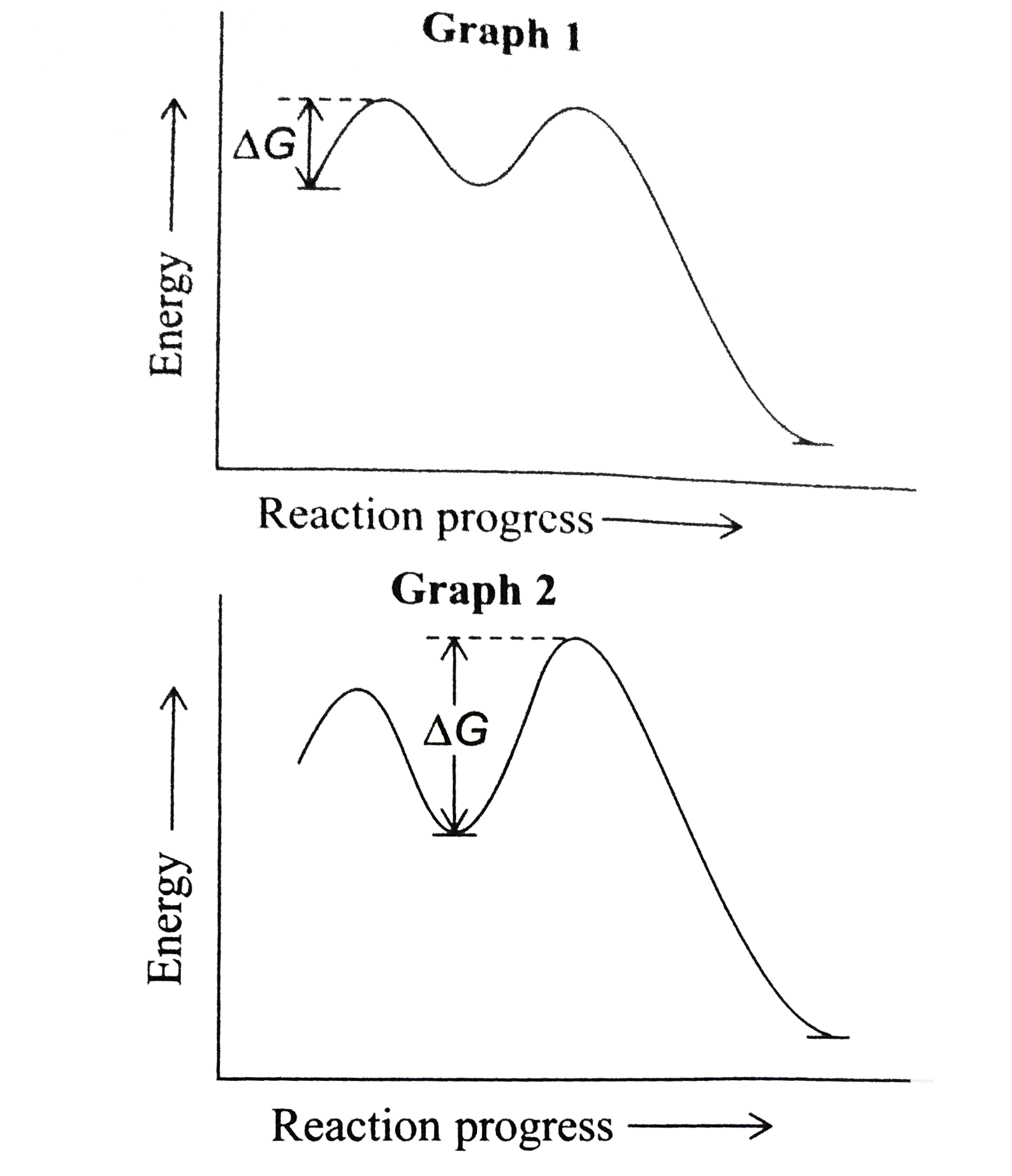
A reaction energy level diagram for an SN1 reaction .The rate limiting step is spontaneous dissociation of an alkyl halide to give a carbocation intermediate:
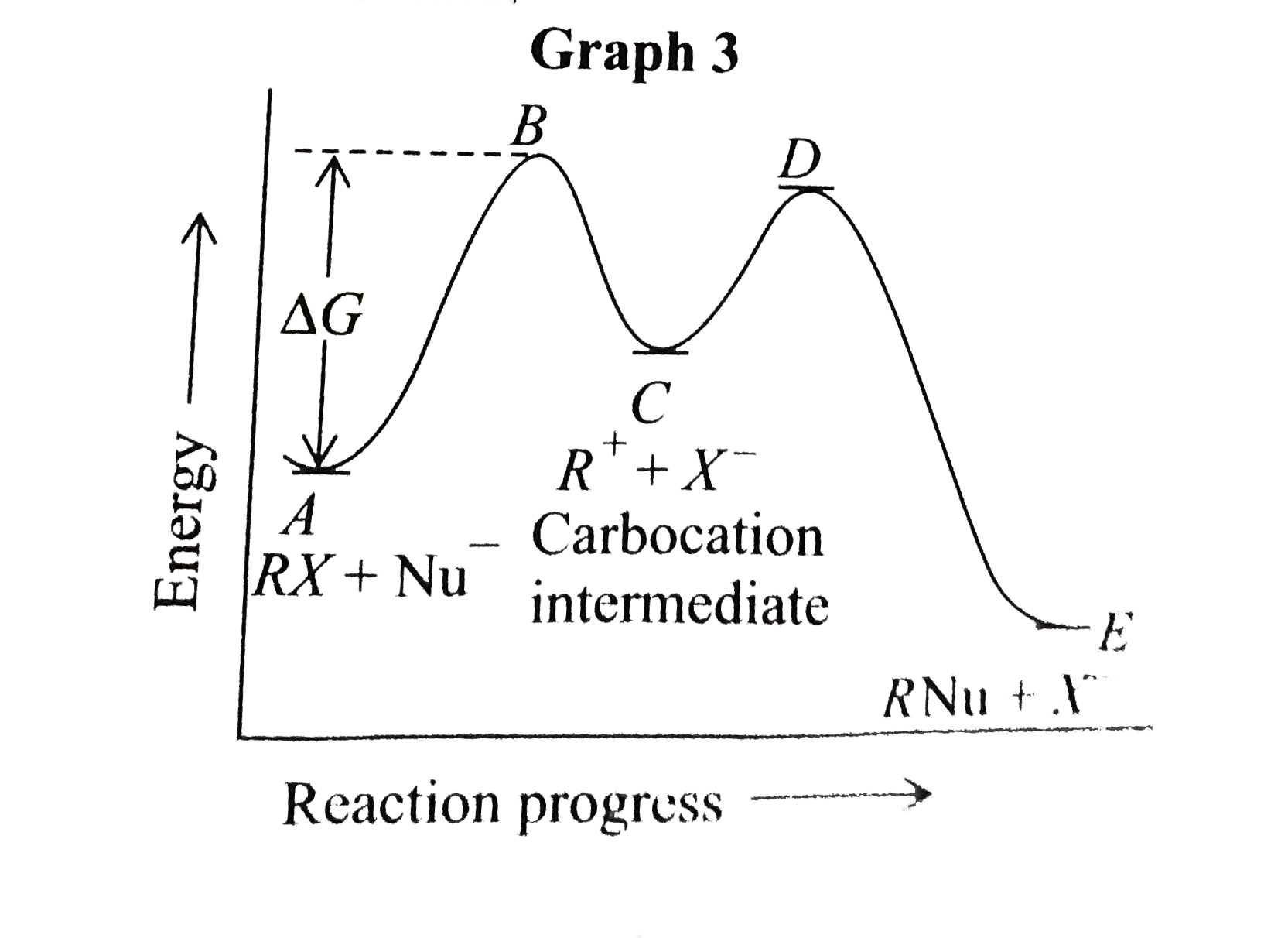
In SN1 reaction the hybridization changes in rate determination step. Select the correct change among the following:View Solution
Knowledge Check
- Question 1 - Select One
SN1 reaction is a first order nucleophilic substitution e.g.
CH3−CH3∣C∣CH3−Br+H2O→CH3−CH3∣C∣CH3−OH+HBr
The concentration of nucleophile does not appear in the rate law expression.
Reaction rate k[RX]
In a mulptistep organic reaction , the rate-limiting step is the slowest step . Rate determining step is represented by the following energy level diagram:
A reaction energy level diagram for an SN1 reaction .The rate limiting step is spontaneous dissociation of an alkyl halide to give a carbocation intermediate:
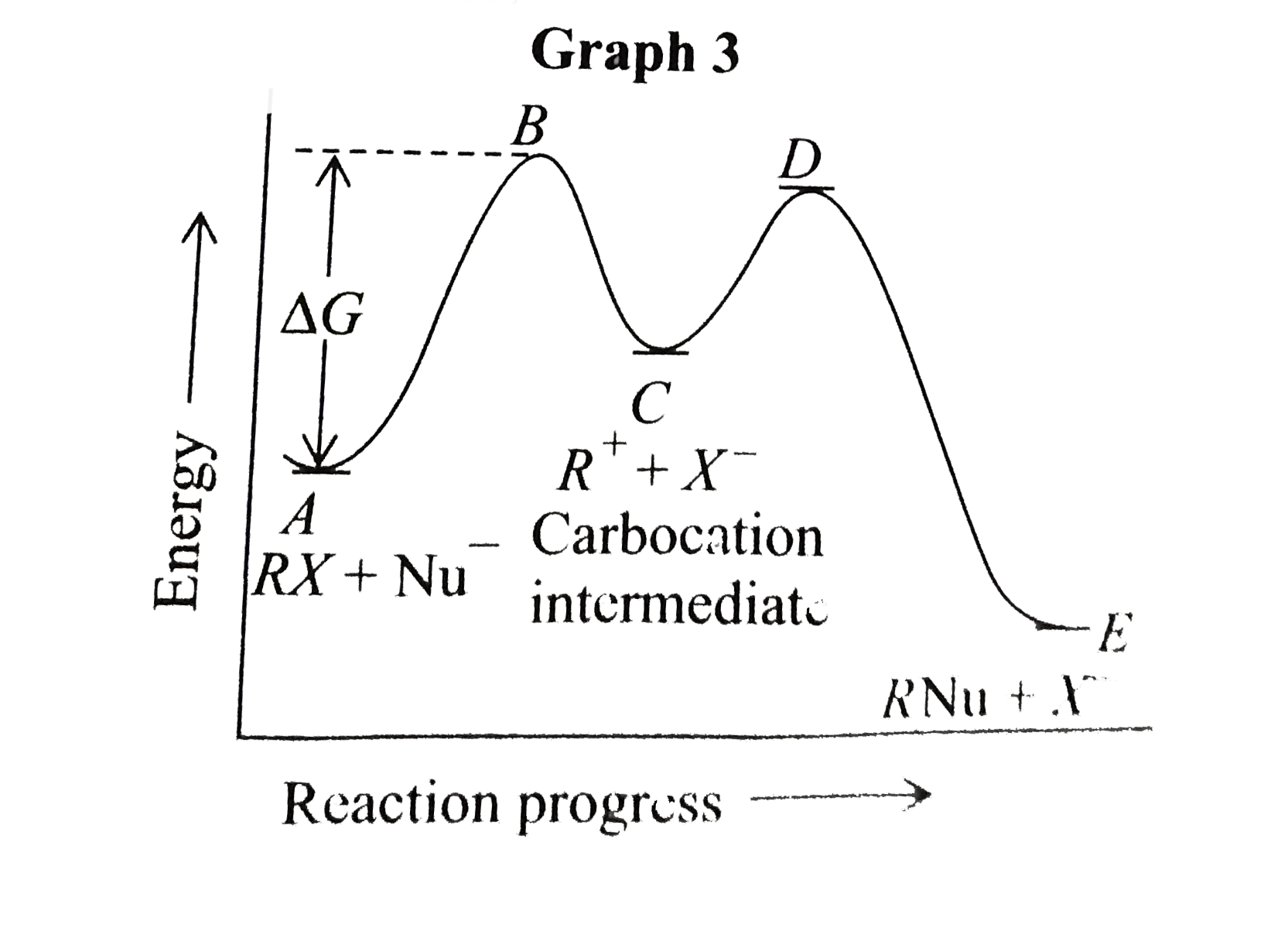
SN1 reaction is :Asingle step reactionBtwo step reactionCa reaction involving free radical intermediateDa reaction involving carbocation intermediate - Question 2 - Select One
SN1 reaction is a first order nucleophilic substitution e.g.
CH3−CH3∣C∣CH3−Br+H2O→CH3−CH3∣C∣CH3−OH+HBr
The concentration of nucleophile does not appear in the rate law expression.
Reaction rate k[RX]
In a mulptistep organic reaction , the rate-limiting step is the slowest step . Rate determining step is represented by the following energy level diagram: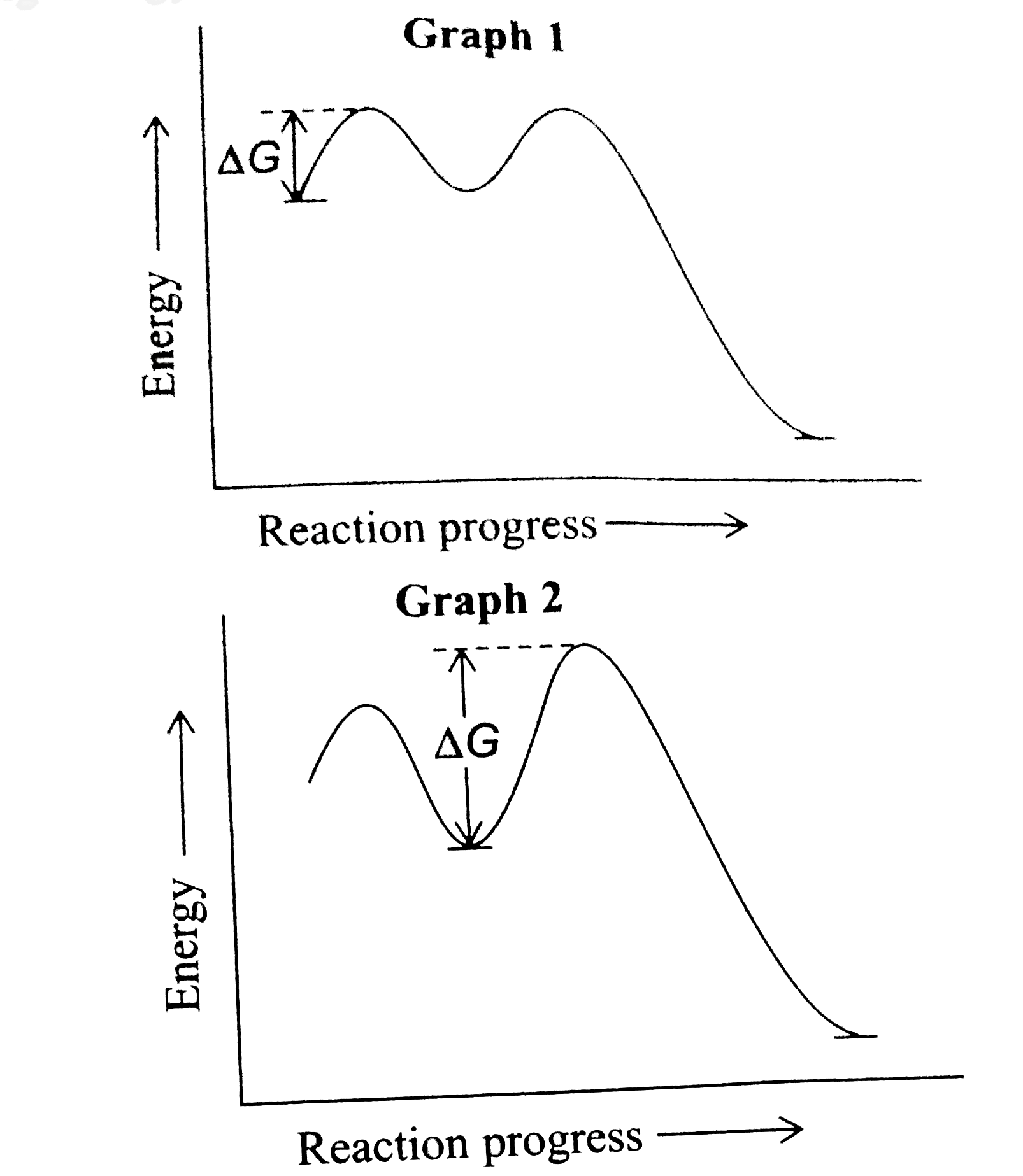
A reaction energy level diagram for an SN1 reaction .The rate limiting step is spontaneous dissociation of an alkyl halide to give a carbocation intermediate:
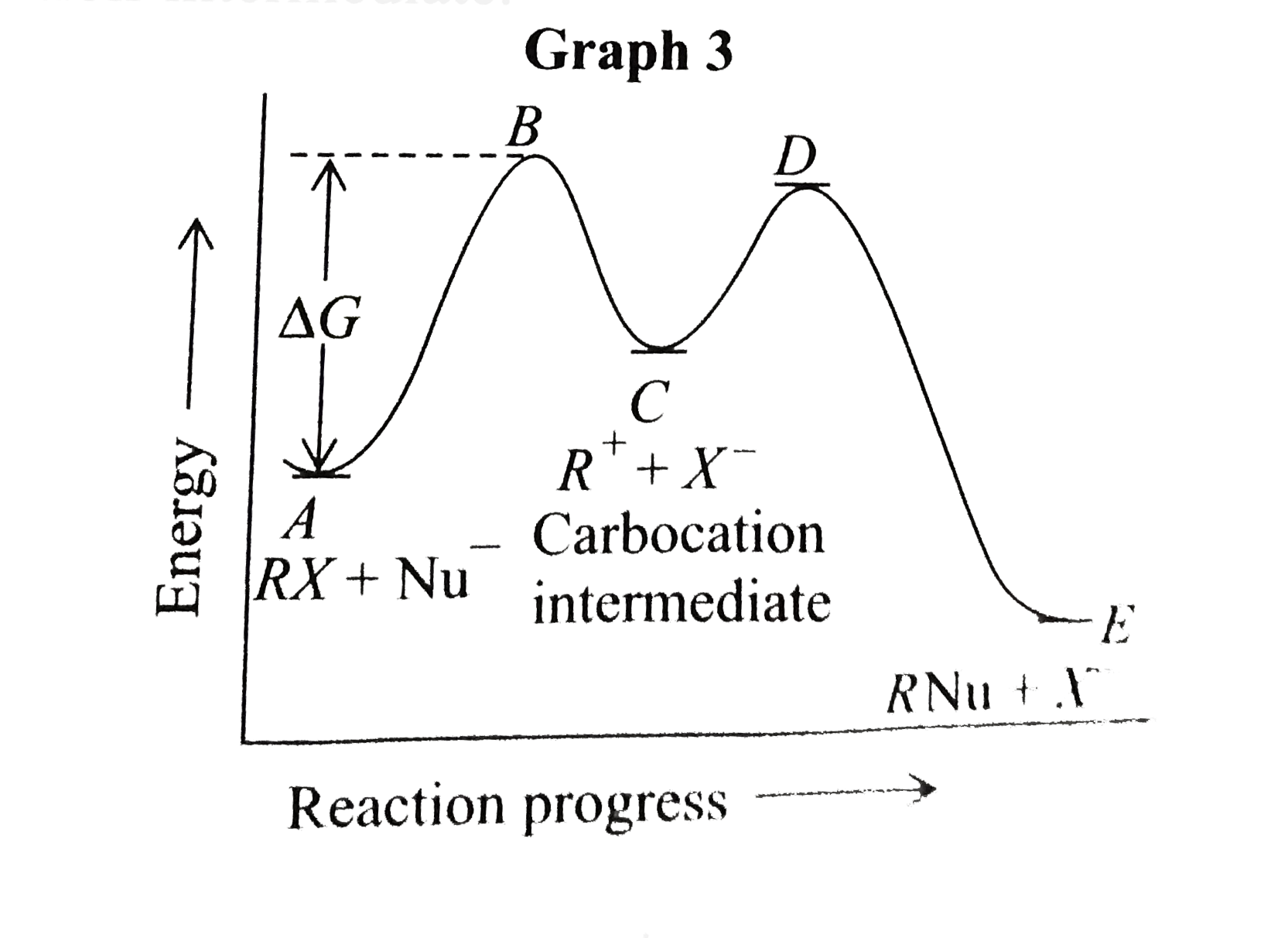
Select the correct statement (s) about the graph 1:Afirst step is rate determining and it is endothermicBfirst step is rate determining and it is exothermicCsecond step is rate determining and it is exothermicDsecond step is rate determining and it is endothermic - Question 3 - Select One
SN1 reaction is a first order nucleophilic substitution e.g.
CH3−CH3∣C∣CH3−Br+H2O→CH3−CH3∣C∣CH3−OH+HBr
The concentration of nucleophile does not appear in the rate law expression.
Reaction rate k[RX]
In a mulptistep organic reaction , the rate-limiting step is the slowest step . Rate determining step is represented by the following energy level diagram: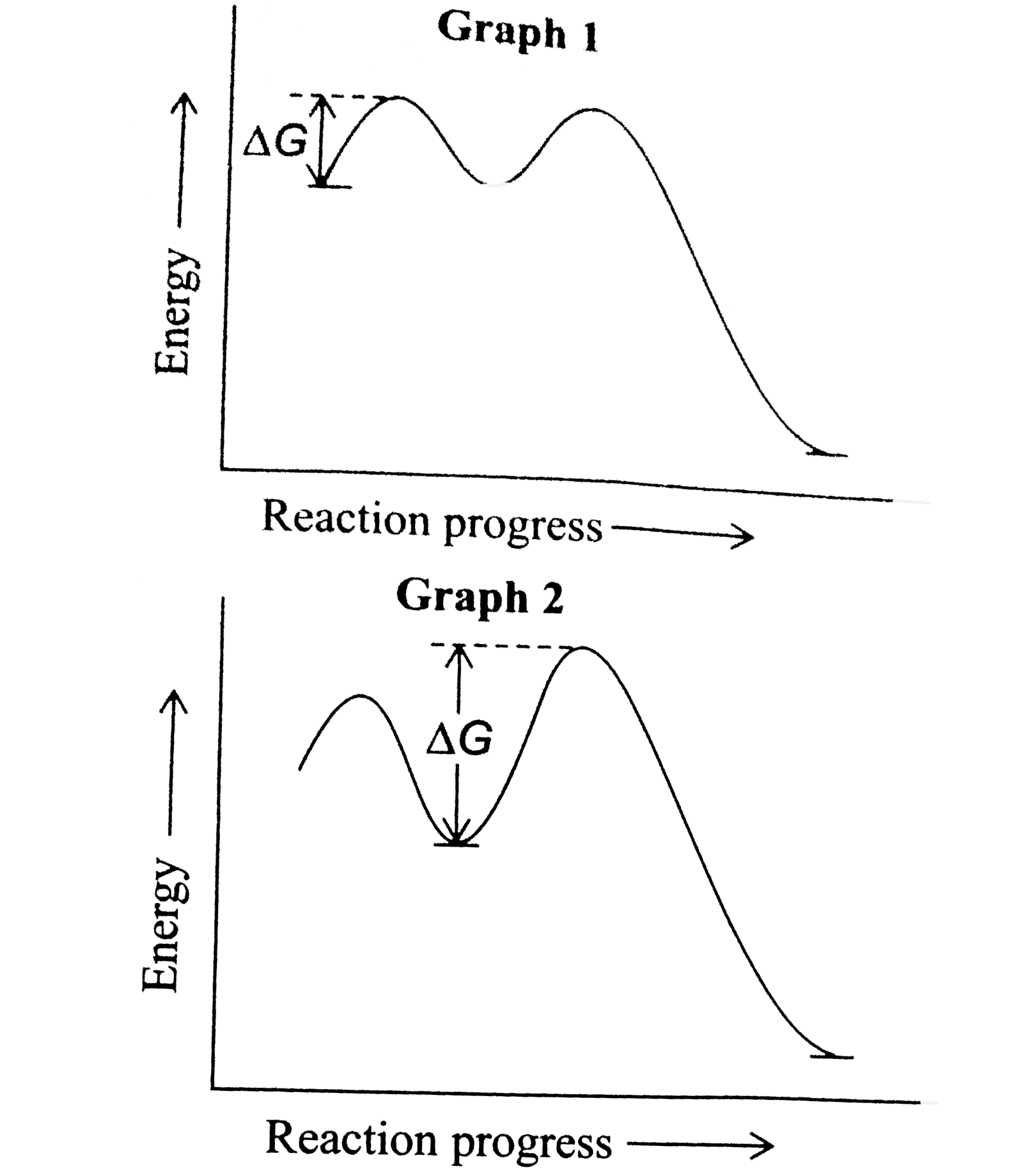
A reaction energy level diagram for an SN1 reaction .The rate limiting step is spontaneous dissociation of an alkyl halide to give a carbocation intermediate:
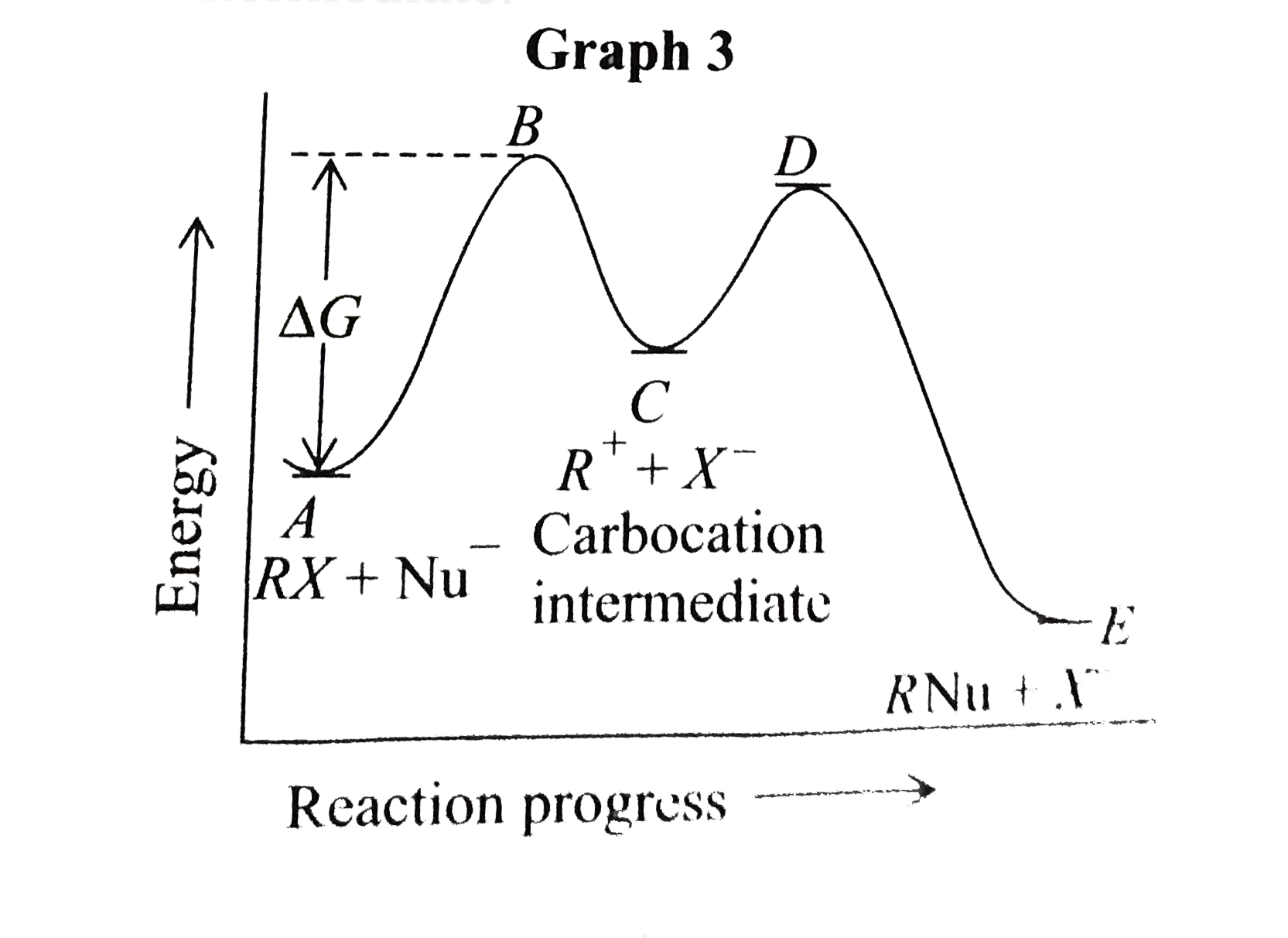
Select the correct statement(s) about the graph 2:Afirst step is rate determining and it is endothermicBfirst step is rate determining and it is exothermicCsecond step is rate determining and it is exothermicDsecond step is rate determining and it is endothermic
CH3−CH3∣C∣CH3−CHO shows Cannizzaro's reaction due to
View Solution⎛⎜ ⎜⎝−−CH2−CH3| C | CH3−CH2−CH3| C | CH3−−⎞⎟ ⎟⎠n is a polymer having monomer units ____________.
View SolutionCH3−CH3∣C∣OH−CH3∣C∣NH2−CH3HNO2−−−→Δ?
View SolutionIn the reaction: CH3−CH3∣C∣CH3−OH+HCl→CH3−CH3∣C∣CH3−Cl
the rate-determining step is:View SolutionThe reaction
CH3−CH3∣C∣CH3−ONa+CH3CH2Cl→CH3−CH3∣C∣CH3−O−CH2−CH3
is calledView Solution

